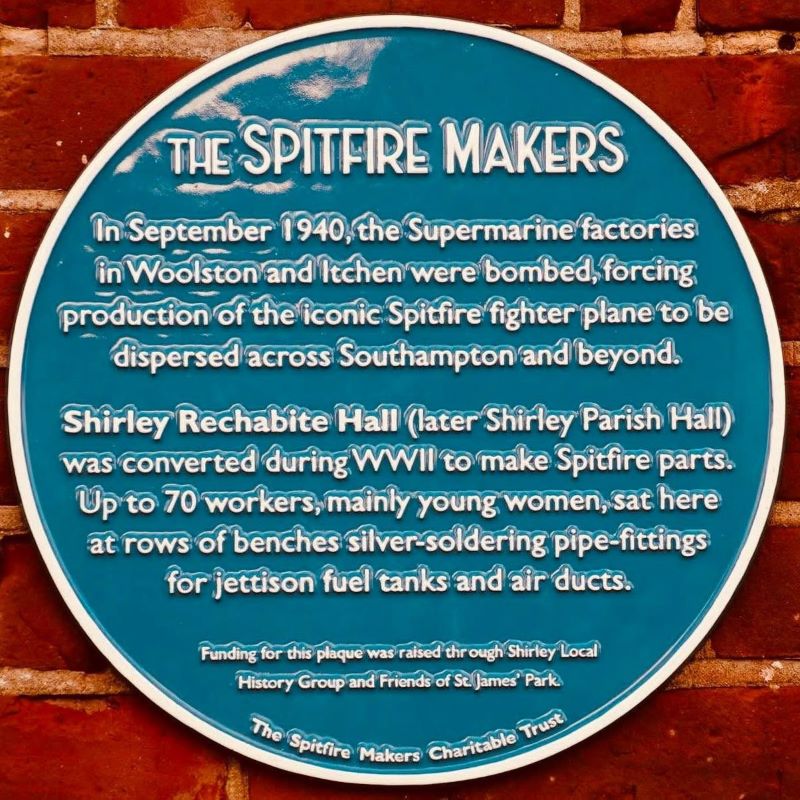A story behind every plaque.
In three previous articles I have mainly covered some of the stories behind the English Heritage blue plaques found in our city.
In this final article I will cover some of the Black History Month ones, the Bevois Mount History Group ones in their area, the Southampton Council black ones, which remember local people who had a connection to the Titanic, the Spitfire Makers Trust plaques remembering people and places involved in the local production of the plane, plus the red transport heritage ones.

Southampton has celebrated Black History Month each October since 2005.
Plaques include one to Bob Marley the Jamaican musician and songwriter. On May 29th, 1973, as a member of the Wailers, he appeared at the Coach House Club at the rear of the Fleming Arms in Swaythling. Amusingly, local press reported on The Whalers!

Other plaques include jazz musician, Joe Harriott, who is buried in a Bitterne churchyard and singer, songwriter, and DJ, Craig David, who grew up on the Holyrood Estate.

Muhammad Ali, the 3-time World Champion boxer, has a plaque on the Country Casuals store in Hedge End. In 1971, he opened a Fine Fare supermarket on the site. He was on a UK tour promoting the Ovaltine beverage.
In 1936, Alf Charles from Trinidad, was the first black footballer to play for Southampton FC and has a plaque at St. Mary’s stadium. There is also a plaque at the site of the former West Indian Club. It opened in 1975 and was a focal point for the community for many years.
In recent years, the Bevois Mount History Group has organised not only 11 plaques, but six murals in their area.

One plaque in Lodge Road is to John Arlott (1914 – 1991).
He became well known as a cricket commentator but in World War 2 was a Southampton policeman for eleven years, until leaving in July 1945 for BBC radio. Arlott’s poetry was spotted by John Betjeman, who recommended him for a job.
One of Arlott’s works was a book of twelve sonnets, Clausentum, which was the name of the Roman settlement in Southampton.
Another mural shows renowned poet, Alexander Pope (1688-1744). He was a friend of the Earl of Peterborough, who owned Bevois Mount House and estate. Pope often visited and many of his phrases have entered the language such as “Hope springs eternal in the human breast” and “A little learning is a dangerous thing.”
The sinking of the Titanic in April 1912 hit Southampton very hard, as 550 of the crew who died had a local address. From 2012, black Titanic plaques were put up on properties, with many in the Shirley and Freemantle areas. It is good to remember the ordinary working-class people who perished as well as the rich and famous.

In recent years, the Spitfire Makers Charitable Trust have put up 14 plaques, with more planned. After being bombed in September 1940, the problem was how to continue building Spitfire planes without a factory. The answer was to disperse production to ‘shadow factories’, many of which were in the Shirley area. Parts were made in various places, such as garages, industrial premises, and even a Parish Hall. The plane was designed by R.J. Mitchell, who has a blue plaque on his home in Highfield. The Spitfire played an important role in World War 2.
Southampton’s transport heritage is represented with a red plaque on the former Italianate style railway terminus building, which operated from 1840 to 1967. It is now the Genting Casino.
There is also a red transport plaque at the entrance to Hythe Pier.
- In Common is not for profit. We rely on donations from readers to keep the site running. Could you help to support us for as little as 25p a week? Please help us to carry on offering independent grass roots media. Visit: https://www.patreon.com/incommonsoton

